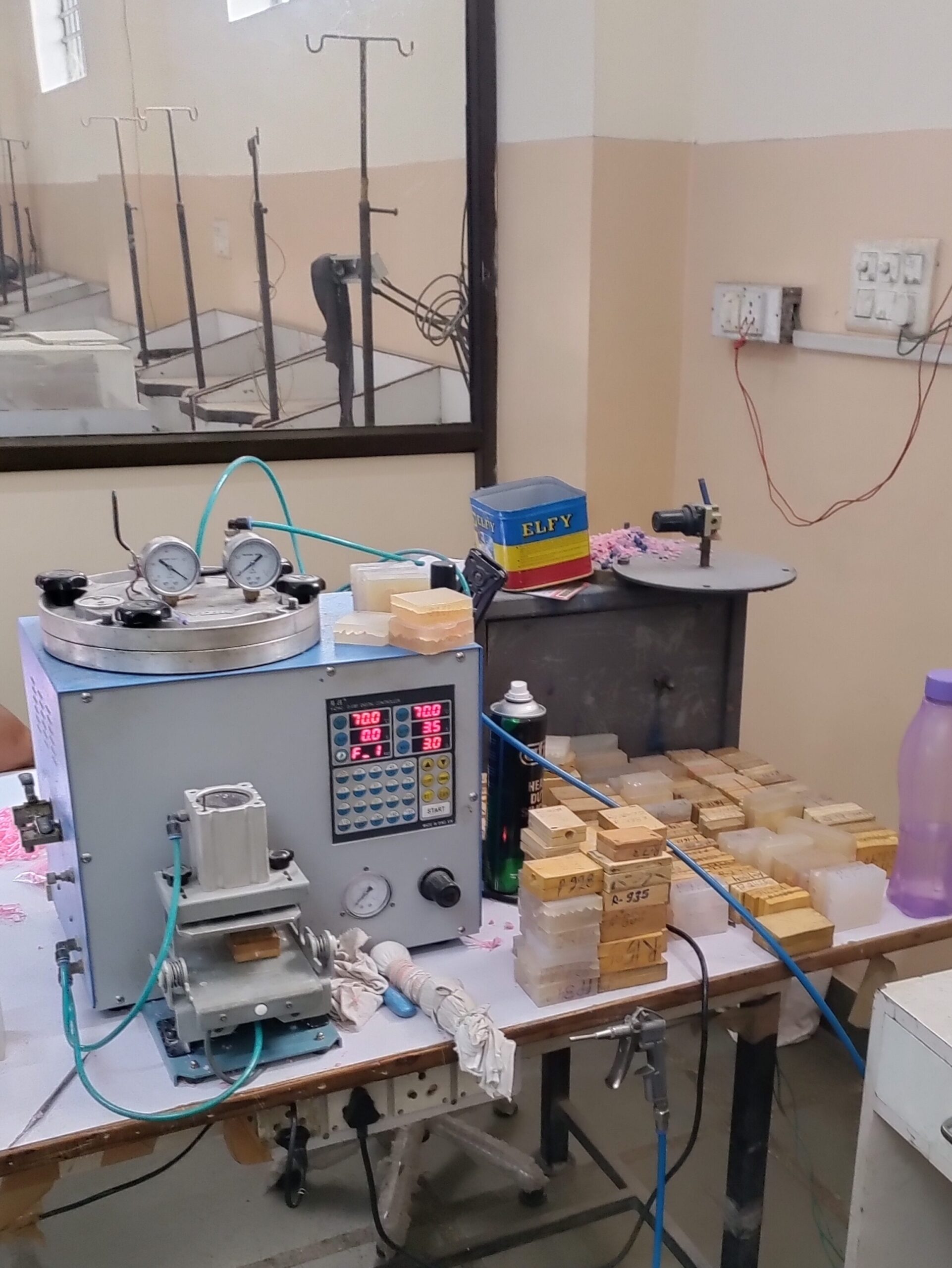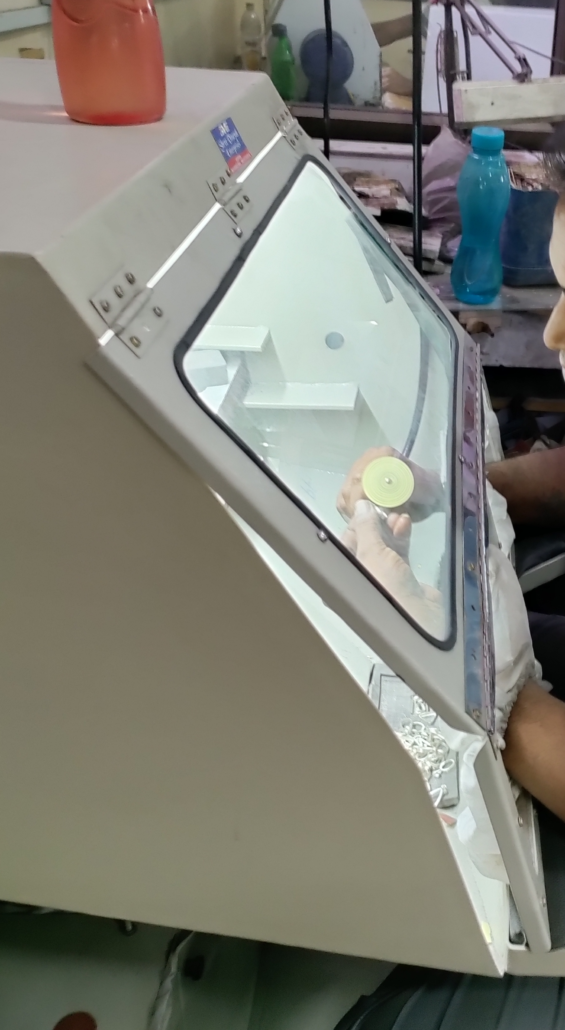Manufacturing Process of takes time and skill, like any other art form. Jewellery as a product can be classified in various categories such as pure Gold Jewellery, Diamond Jewellery, Kundan Jewellery etc.
First of all the design comes in the mind than a blue print of that design is drawn on paper. Moreover, it is a kind of assembling and jointing various gold parts like flowers, small balls and gold leafs, wire etc. In this way the process of manufacturing Jewellery passes through various interlinked sub-processes starting from melting the gold and ends with polishing the Jewellery.
Two main processes of manufacturing are popular
- Traditional method
- Modern method
Jewellery making is hundred percent a human process whereas modem method of manufacturing process is some where based on machines too. In modern method designs are made with the help of machines. One other pattern of manufacturing Jewellery is very popular now a days i.e. Kundan Jewellery which is also a hand made pattern and required a significant degree of human effort.
Designing Process
Jewellery is both wearable and durable. Wearable, so jewellery is comfortable, light, and beautiful and durable to withstand common wear and tear. The design has a flexible and fluid design making it fit comfortably on your client’s neck, emphasising her beautiful neckline. Once approved after an in-depth analysis this 2D sketch is then transformed with the help of Computer Aided Design techniques into a 3-dimensional image. The CAD software enables the designers to convert their ideas into designs and get an insight into what the jewellery piece will look like. This 3D image gives a complete and thorough view of each part of the final jewellery piece. Once the creative team approves the designs based on design aesthetics, it then is moved to the production manager’s arena.
An RPT (Rapid ProtoType) is made during the prototyping stage by the production team, which is generally used as a master sample. RPTs are made using the same technology as a 3D printer and can be made within minutes, thereby reducing the time scale of the design and in turn the manufacturing process. This RPT is used to make a liquid resin dye, which can then be used to manufacture the jewellery.
Manufacturing Process :
LOST WAX CASTING/CASTING METHOD
Today a lot of the jewellery being sold commercially and on a large scale is being produced through this method. It gives both economies of scale when it comes to mass production along with the flexibility in production as both complex and simple designs can be easily replicated.

A rubber mould is first made to replicate the perfect jewellery piece. The artisan has to carve this rubber for the jewellery piece to come out exactly right. Once the mould has been commissioned, the liquid hot wax is injected into the rubber mould. This wax once cooled and hardened leaves behind a jewellery piece made entirely of wax.

Mould making is an integral part of the production process. Original piece is placed between 6 molding rubber pieces & secured in molding frame. Then, they will be placed in Vulcanizer unit at 325 F for 35 min, which the process for mould making is called “Vulcanizing”. Finally, the mold is cut opened and original piece is removed. 3-D space is cut out.


Prepartion of Wax piece
A single rubber mould can be used to replicate numerous pieces. Each wax model is placed with other designs on a cylindrical structure, which resembles a tree. Then placed in an investment (a device used to melt the wax) the wax is melted away and replaced by Plaster of Paris. The liquid metal is then poured into the cast and left to cool. Once cooled the plaster is broken open leaving behind jewellery pieces in the chosen metal.


and attached to a sprue

Wax injected into this empty rubber mold at 180 F, then, removed the wax piece from rubber mold and attached to a sprue, and the process of soldering the wax pieces on a wax stem is called “treeing”.
The sprue makes an angle of approximately 45 degree with the stem. The tree is such that the heavier items are at the bottom of the tree and the lighter ones are at the top. Several wax pieces can be attached for mass production.
Preparation of Investment Mold
Wax Sprue is placed into a stainless steel cylinder which is then occupied with a slurry of chemical powder and set to dry for 10 min. Cylinder cured in Kiln 1500 F for 4 hours. Wax melts thus leaving a 3-D space inside cast.



Casting by Centrifugal Or Vacuum
Casting is a very complex process, which requires utmost skilled and experienced casters for the desired final product. Cylinder is placed in Centrifuge or Vacuum unit. Gold pellets are melted at 1600 F in crucible with torch. Molten metal is then poured into the cylinder, allowed to cool, then demolished to reveal the Jewellery in casting form


Devestment
Cast cylinder is washed to remove the jewelry sprue from the chemical powder. Then, Sprue Tree is ready for individual piece removal.


Grinding
Once the raw casting is clipped off from the casting tree, it has a tiny nub leftover at a place where the gold piece was attached to the sprue. The polisher grinds off this nub using the motorized grinding machine, which acts as an abrasive to smooth the surface of the gold piece/jewellery. A final polishing is then done by holding the piece against a spinning grinding wheel to achieve a smooth surface.

Soldering
Soldering is a process where a metal alloy, referred to as solder, is heated to its melting point. The solder can then be used to form a bond between two pieces of material.
Polishing
A good quality finish creates a professional, high value and irresistible piece of jewellery that really stands out from the crowd. Jewellery pieces with diamonds require pre polishing before the diamond is set. This is because once the diamonds are set the area below the diamond portion, they cannot be polished and may affect the shine of the diamond.
Setting Gemstones: If the design includes gemstones, they are carefully set into the jewelry piece. Setting methods include prong setting, bezel setting, and pave setting, among others.
Engraving and Detailing: Any additional details, such as engraving or texturing, are added to enhance the overall design.
Quality Control: The finished piece undergoes a thorough quality control check to ensure that it meets the designer’s specifications and standards.
Plating or Coating (Optional): Some jewelry pieces may undergo additional processes such as plating or coating to enhance their appearance or provide specific properties.
Electroplating Process : Electroplating is basically the process of plating a metal onto the other by hydrolysis mostly to prevent corrosion of metal or for decorative purposes.
This process is influenced by a variety of factors. Some of these factors include the electrodes’ surface area, temperature, the type of metal and electrolyte used, and the magnitude of the applied current. Therefore, It is normal for different batches of products to have darker or lighter electroplating colors.
Final Inspection and Packaging: A final inspection is conducted to ensure that the jewelry piece is free of defects and meets quality standards. The finished jewelry is then carefully packaged and prepared for distribution or sale.
It’s important to note that advancements in technology, such as computer-aided design and 3D printing, have significantly impacted the jewelry manufacturing process, allowing for more intricate designs and efficient production methods. Additionally, handcrafted and artisanal approaches continue to be valued for their unique and personalized touch in the world of jewelry manufacturing.
Gemstone manufacturing flow chart
1 thought on “Production procedure of Jewellery”